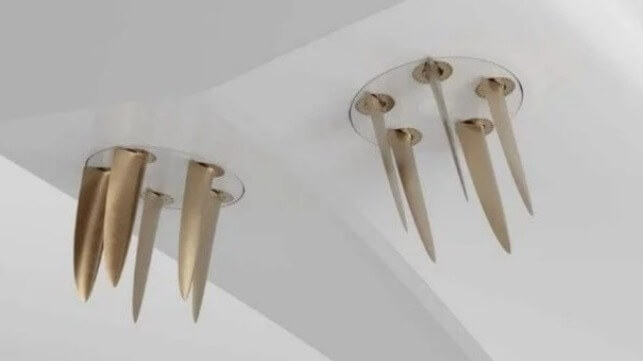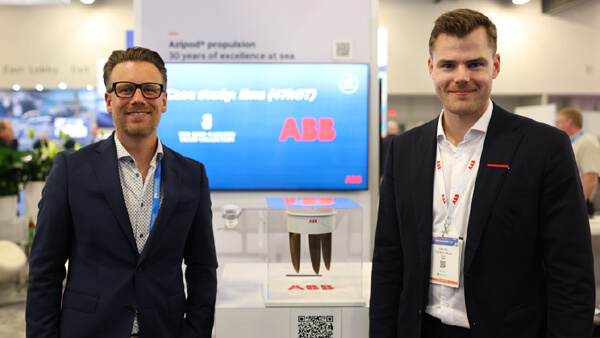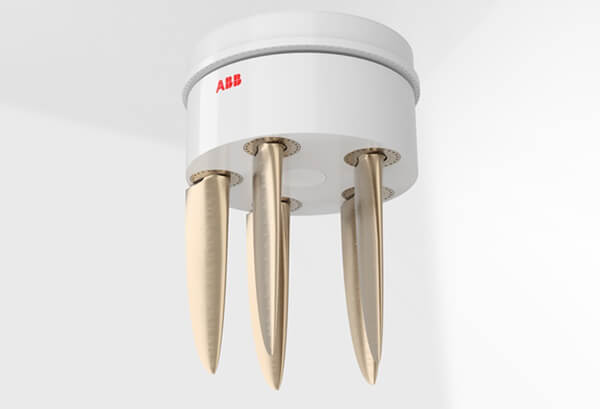ABB Validates New Propulsion Concept in Study with Ritz-Carlton Yacht

ABB is making strong progress on its new propulsion concept called Dynafin which the company believes will increase a ship’s efficiency and contribute to the efforts to reduce emissions. During the recent Seatrade Global Cruise conference, ABB along with The Ritz-Carlton Yacht Collection reported the results of a new collaboration studying the result if Dynafin was employed for the propulsion of Ritz Carlton’s under-construction yachts.
Inspired by the dynamic motions of a whale’s tail, Dynafin would replace the traditional shaft and propeller with an electric-powered wheel with a series of blades to create the propulsive force. Tuomo Salmi, Global Commercial Manager at ABB for compact Azipod units and Dynafin, explains the engineers sought to imitate the whale’s tale which scientists have long known as a highly efficient form of propulsion.
Dynafin features a main electric motor that powers a large wheel moving at a moderate 30-80 rotations per minute. Vertical blades, each controlled by an individual motor and control system, extend from the wheel. The combined motion of the wheel and blades generates propulsion and steering forces simultaneously, enabling increases in operational efficiency and precision for ships.

ABB's Tuomo Silma (right) with Ritz-Carlton Yacht Collection's Clatyton van Welter (left) presented the results of the Dynafin study
The collaboration between ABB and Ritz-Carlton further validated the concept that ABB first presented in 2023 after 10 years of study and development work. During the presentation, they reported the Ritz-Carlton study demonstrated a 12 percent reduction in propulsion power for the yacht cruise ship. They also demonstrated improvements in the hydrodynamic performance which resulted in less fuel and emissions.
ABB took a “what if” approach looking to further validate the Dynafin concept with Ilma and reports it demonstrated important benefits including less power, less fuel, reduced weight from the propulsion system, and a requirement for less space. Installing two units on the Ilma would have saved 100 cubic meters of space, explains Salmi which could be used to provide other amenities for the passengers and crew.
Clayton van Welter, Vice President, Marine Operations, and Tobias King, Vice President New Building both with Ritz-Carlton share similar views calling the findings encouraging. They said the results demonstrated the potential to offer meaningful energy savings.
Beyond the fuel and power savings, Ritz-Carlton also highlights the benefits of minimized noise and vibration from Dynafin, which van Welter called “incredibly valuable for a luxury product.” He notes the ABB team ran the tests on the current designs for Ilma and did not optimize the hull design to Dynafin.
“The evidence gained from this analysis continues to point a positive direction for this innovative propulsion system,” says van Welter. He explains that they used the upcoming cruise yacht, Ilma, currently being built at Chantiers de l’Atlantique, as the test hull for the collaboration. Due to enter service in 2024, Ilma is a 46,750 gross ton cruise ship that will measure 790 feet (241 meters) in length and 95.5 feet (29 meters) in width.
As built, Ilma will have two 5.5-MW Azipod propulsion units from ABB. When the units were ordered in 2022, ABB highlighted that they would provide high maneuverability and low vibrations and noise for the ship. They expect the pods to provide the ability to cut fuel consumption by up to 20 percent when compared with a traditional shaftline setup.

Dynafin wheel with a series of blades (ABB)
“Dynafin is past the concept stage,” reports Salmi saying they are making good progress toward the target of having it commercially available for 2026. Among the early applications he sees for Dynafin are designs that face the highest emission regulations.
The current Dynafin designs are for units with 1 to 4 MW per unit with ABB noting that it will be scalable. The solution will also be flexible on speed with the predictions that Dynafin will be able to provide up to 30 knots.
Ritz-Calton said that “the product’s desirability continues to strengthen with this further evidence,” from the collaboration. “The findings are encouraging, and we will continue to monitor the great strides that ABB is making with this product,” concludes van Welter.
No comments:
Post a Comment